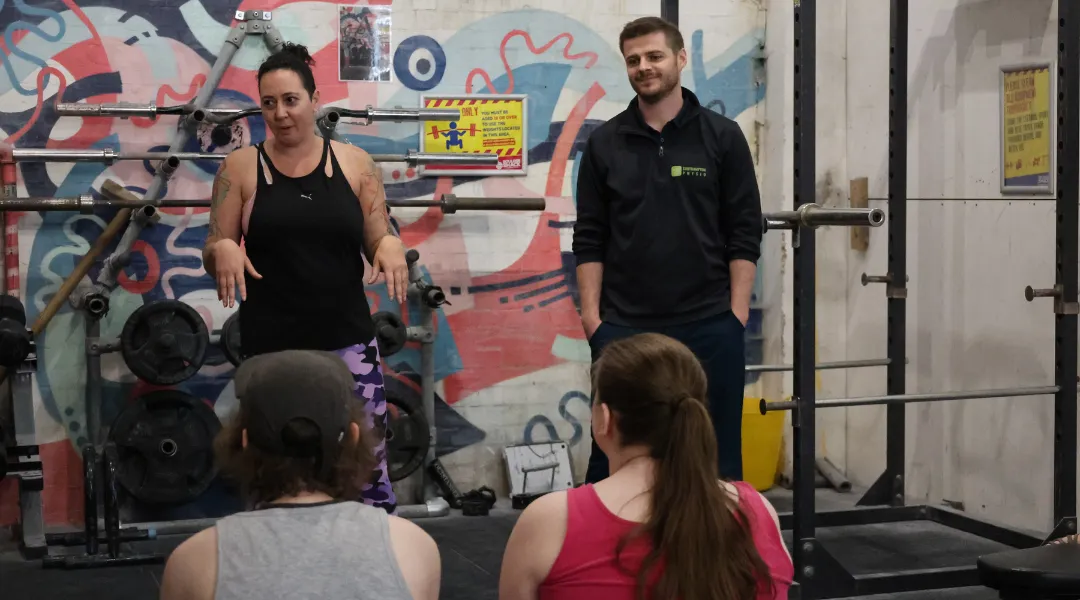
What Everyday Athletes Can Learn from Olympians
The best Olympic secrets aren’t flashy. They’re warm-ups, niggles and smart tweaks anyone can use.
When we picture Olympians, we often think of extraordinary feats of power or endurance. But what keeps them at the top isn’t just talent or willpower. It’s how they prevent injuries that could derail years of training. Everyday athletes don’t need an entourage of specialists or access to cryo chambers to borrow these strategies. The good news is that the simplest lessons are the most powerful.
Here are three injury-proofing habits Olympians rely on - and how you can apply them to your own training this week.
Don’t ignore the niggles
Olympians are taught to pay attention to subtle body signals: a tight calf that doesn’t loosen after a jog, a shoulder that clicks more than usual or fatigue that lingers into the next day. These small “whispers” often show up before a full-blown injury.
Recreational athletes, on the other hand, tend to brush them off. You convince yourself the ache will settle or that stopping now would make you “soft”. But ignoring early signs is one of the biggest predictors of overuse injuries.
Research shows that overuse problems develop gradually and can often be spotted well before they require time off (Clarsen et al., 2014, British Journal of Sports Medicine). Elite athletes are trained to act when they first notice these shifts - which is why they’re more likely to miss a session or adapt training than push through blindly.
What you can do this week:
Keep a simple training log - even just a note on your phone. Record not only mileage or sets but also how your body felt.
Spot patterns: if the same niggle shows up for two or three sessions in a row, adjust before it snowballs.
See “listening early” not as a weakness but as protecting your ability to stay consistent.
Warm-up is non-negotiable
If there’s one ritual Olympians rarely skip, it’s the warm-up. Not the long, complicated routines you might imagine, but structured movement prep that gets joints, muscles and nerves ready to handle load.
And it works. Injury-prevention programmes like FIFA 11+ - a simple 15-minute warm-up of running drills, balance work and controlled movements - have been shown to cut serious knee injuries like ACL tears by over 50% in young athletes (Bizzini and Dvorak, 2015, BJSM). Similar approaches reduce ankle sprains and hamstring strains across sports.
For everyday athletes, the barrier is often time or complexity. The truth is you don’t need to overthink it. A warm-up doesn’t mean fancy kit or 30 minutes of stretching. It means doing a few drills that raise your heart rate, rehearse movements you’ll actually use and activate stability around key joints.
What you can do this week:
Before a run: try two minutes of light jogging, then 10 walking lunges, 10 side steps and 5–10 short accelerations.
Before lifting weights: do a set of the same movement with just bodyweight or an empty bar, add 10–15 controlled squats or press-ups, then start loading gradually.
Before sport: add in quick balance drills - for example, stand on one leg while brushing your teeth or between sprints.
Think of the warm-up as flicking on the “ready” switch for your body. It’s not complicated. It’s insurance.
Manage the load, not just the pain
Even with the best prep, niggles happen. The difference is how Olympians respond. When something feels off, they adjust immediately: swapping high-impact work for cross-training or reducing intensity. They rarely wait until they’re forced to stop completely.
Load management - the art of balancing stress and recovery - is one of the strongest protective factors against injury. Studies show sudden spikes in training volume or intensity are linked to a higher risk of injury, while gradual increases are protective (Gabbett, 2016, BJSM). Olympians use this principle daily: they build in lighter sessions, recovery blocks and “plan B” options when soreness arises.
Everyday athletes can do the same without fancy tools:
Swap: trade a run for a cycle or swim if your knees are grumbling.
Scale: reduce weight, reps or distance rather than skipping altogether.
Step back: take one rest day earlier in the week to allow tissues to recover.
By adjusting load, not just reacting to pain, you protect your training rhythm and avoid long layoffs.
Encouraging wrap-up
The habits that keep Olympians competing at the highest level aren’t reserved for them. They’re simple, consistent and surprisingly ordinary.
Don’t ignore the niggles.
Warm-up as if it matters - because it does.
And manage the load, not just the pain.
Do these three things and you won’t just reduce injury risk - you’ll train more consistently, recover faster and enjoy your sport for longer.
Save this list for later and try one change this week.
